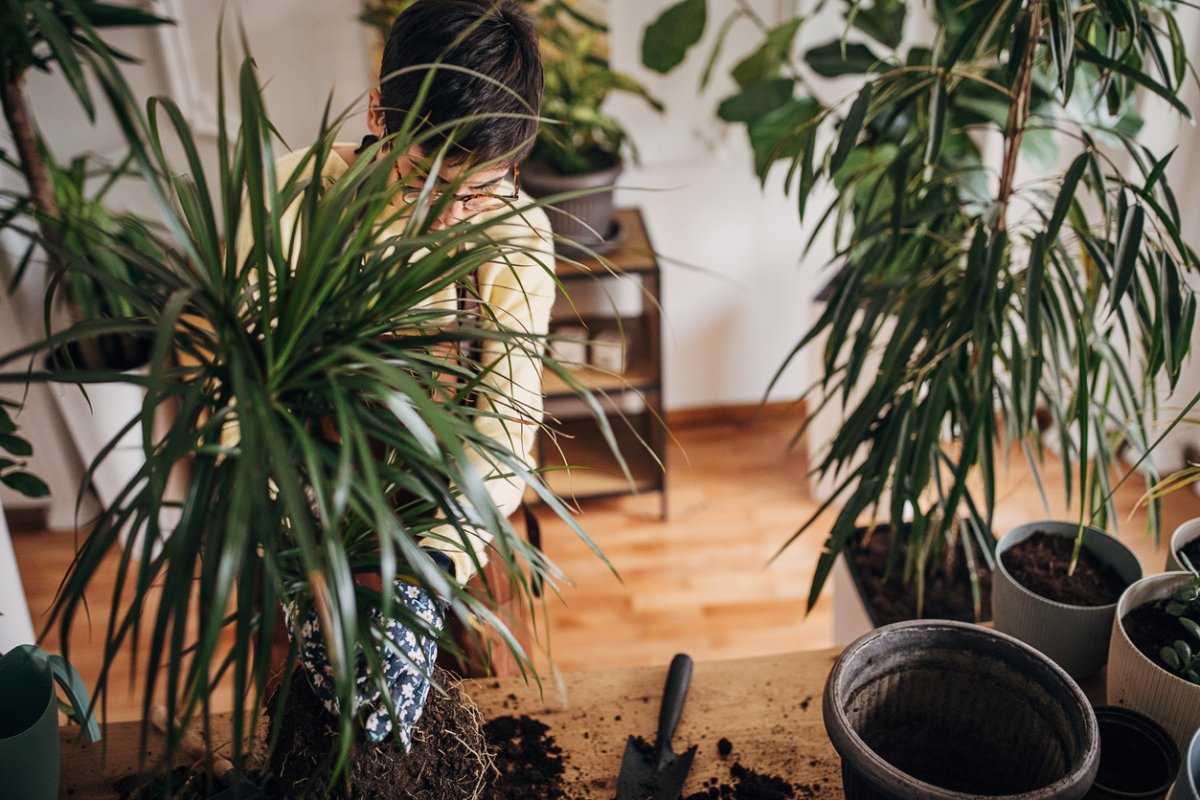

We may earn revenue from the products available on this page and participate in affiliate programs. Learn More ›
There are plenty of good reasons to bring a little foliage indoors. In addition to their beauty, houseplants help clean the air and contribute to a healthier environment. Studies have shown that the mere presence of plants can enhance happiness and productivity, and tending to plants can even reduce stress. But what if parts of your home don’t get enough sunlight for houseplants to flourish? Fortunately, there are plenty of attractive plants that do just fine in low light. If you’re looking for ways to brighten up a dreary spot, one of these low-light indoor plants may be the perfect addition.
1. Philodendron (Philodendron spp.)
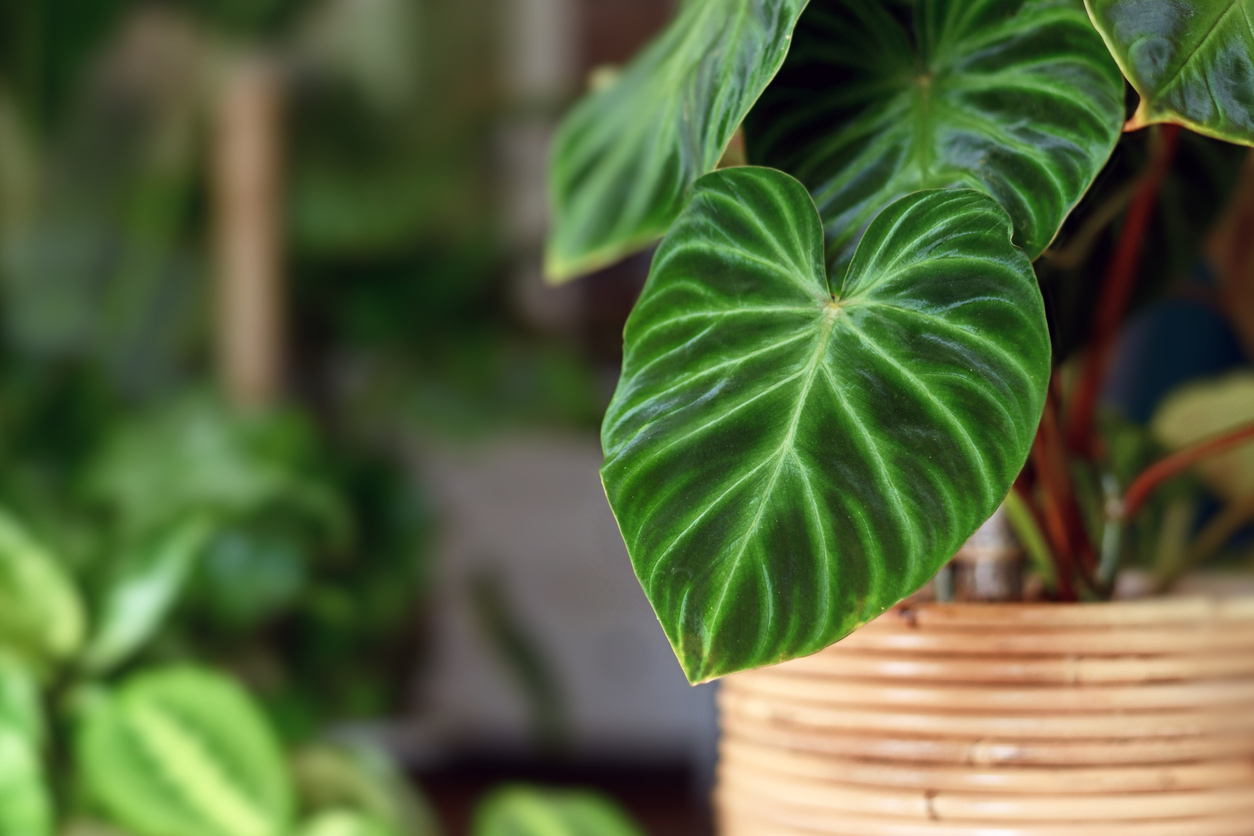
For decades, philodendron has been a houseplant mainstay. Native to the American tropics, it thrives in indoor environments and is easily adaptable to lower light situations. Just be sure to keep it away from drafts and cold window sills, and place it safely away from pets and children. (Like many of the plants on this list, it’s potentially toxic.) One of the best indoor plants for low light, philodendron comes in both vining and shrub-like varieties, so you can choose whichever strikes your fancy.
RELATED: 23 Philodendron Varieties Perfect for Filling Out Your Houseplant Collection
2. Arrowhead Vine (Syngonium podophyllum)
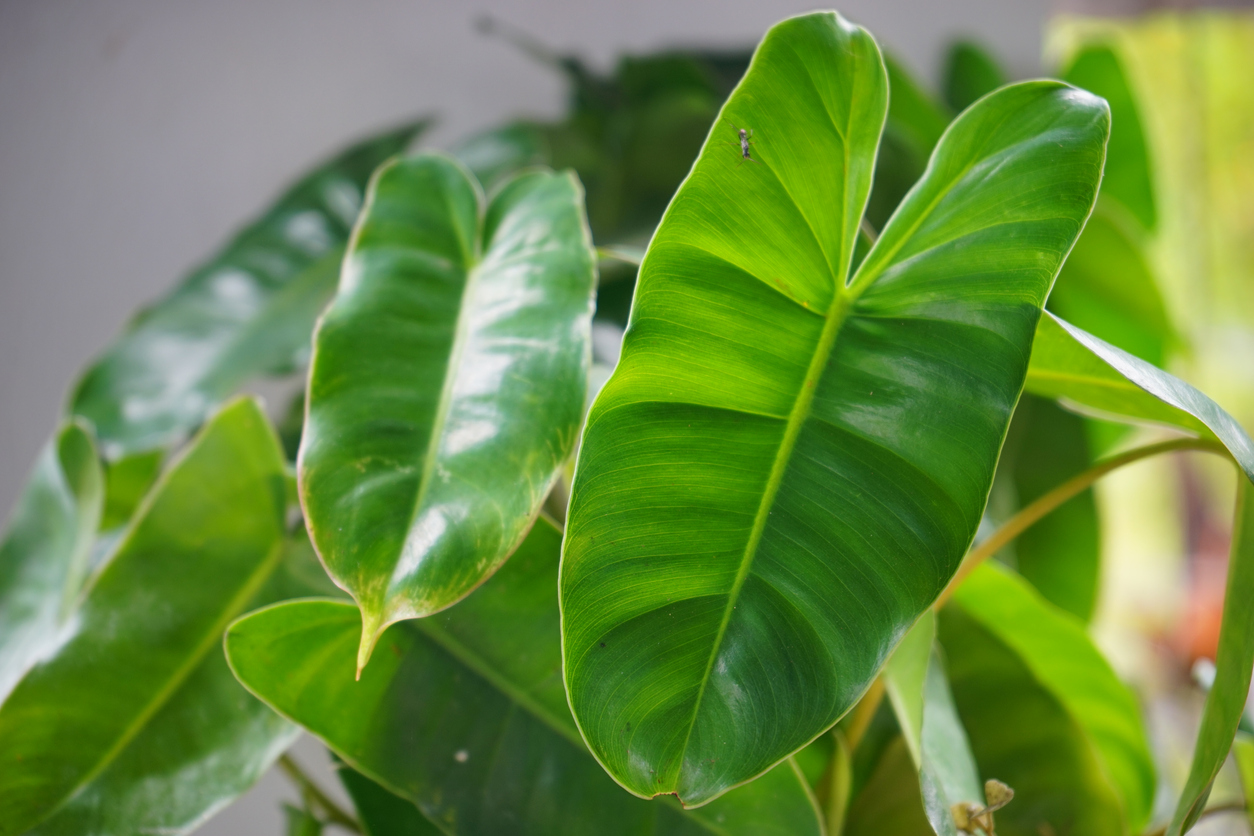
Named for its distinctive arrow-shaped leaf, this shadow-dweller often springs up in variegated shades of bronze, pink, and green. Arrowhead vines grow well in low to medium light and will lengthen as they mature, making them a popular pick for hanging baskets. They tend to want to climb, so prune regularly if you want to keep the plant shorter and bushier. Arrowhead vine is another one to keep away from pets and children.
3. Chinese Evergreen (Aglaonema spp.)

A suitable choice for any novice green thumb, the Chinese evergreen requires very little attention. Even if you follow a when-I-remember-to watering schedule, this plant will still grace your home with showy, lustrous leaves of green streaked with silver, yellow, or white. Be forewarned, though: In low-light conditions, the solid green cultivars will do the best. Whichever type you choose, this low-light houseplant’s glossy leaves and compact, rounded form will make it a highly ornamental addition to any room. Just be sure to keep it out of reach of children and pets.
4. Snake Plant (Dracaena trifasciata)
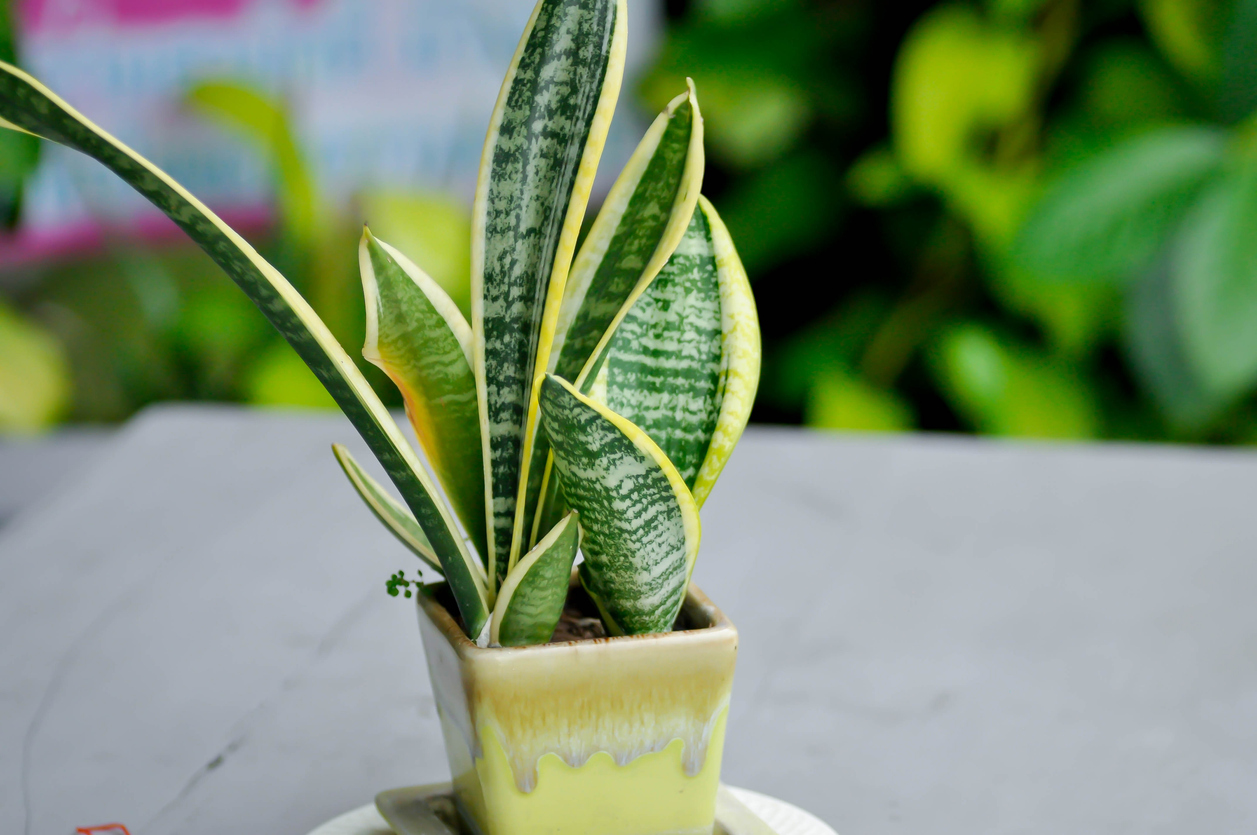
Snake plant, a succulent, is one of the most tolerant houseplants in practically every way, enduring both low light and drought. Its strikingly long, erect leaves are typically edged in yellow-gold, yielding an architectural shape that especially complements modern decor. While it’s notoriously tough to kill, avoid overwatering it. In spring and summer, water only after the soil has dried out. In winter, snake plant may require watering just every other month. While not as toxic as some other entries on this list, it too should be kept away from pets.
RELATED: 15 Snake Plant Varieties for Low-Maintenance Living Decor
5. Fern
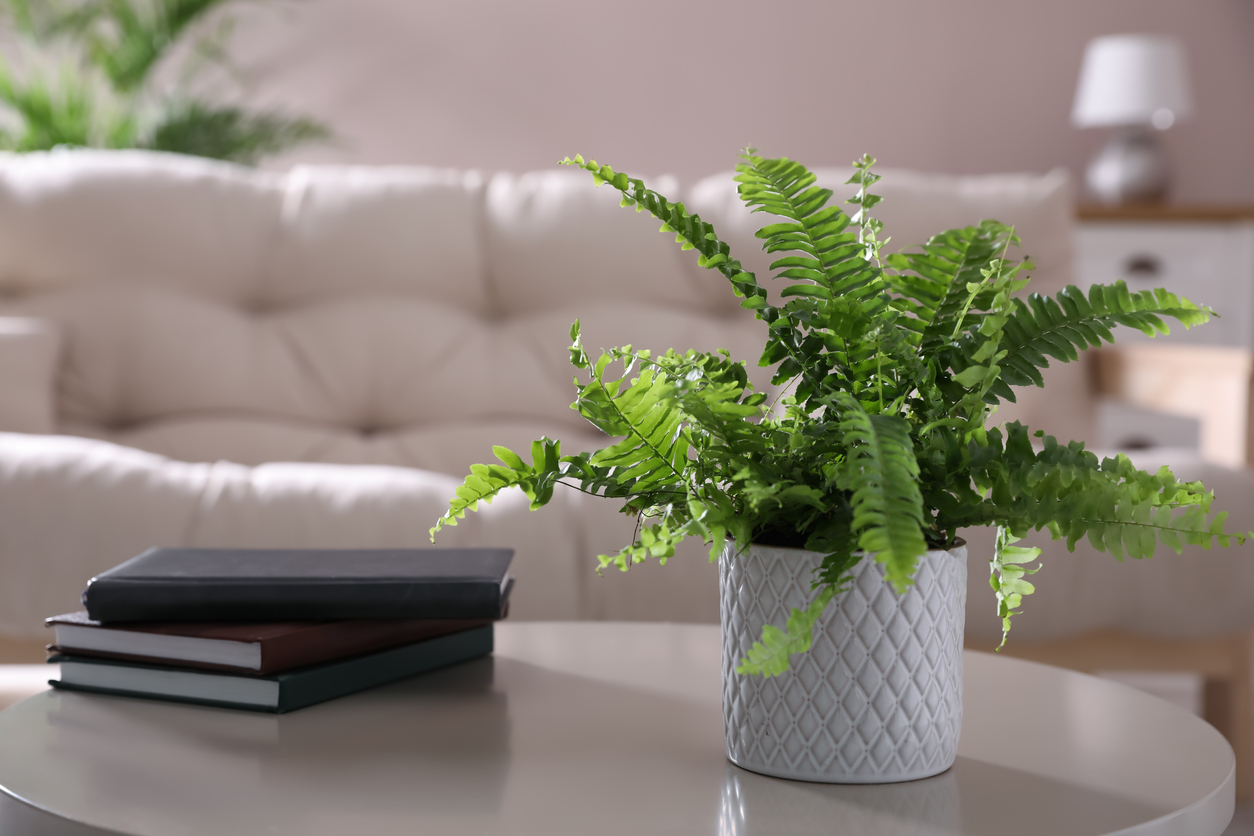
Ferns are familiar forest floor inhabitants, but several fern varieties, including the rabbit’s foot fern and the Boston fern, have made the move to the home. Like their natural-setting counterparts, they thrive in low-light conditions. With their soft, lush fronds, ferns add dramatic visual interest to a room. Avoid drafts or excessive heat, and keep the soil evenly moist. Most ferns like humidity, so daily misting would not be amiss, and some species do especially well in a steamy bathroom.
6. Peperomia (Peperomia spp.)
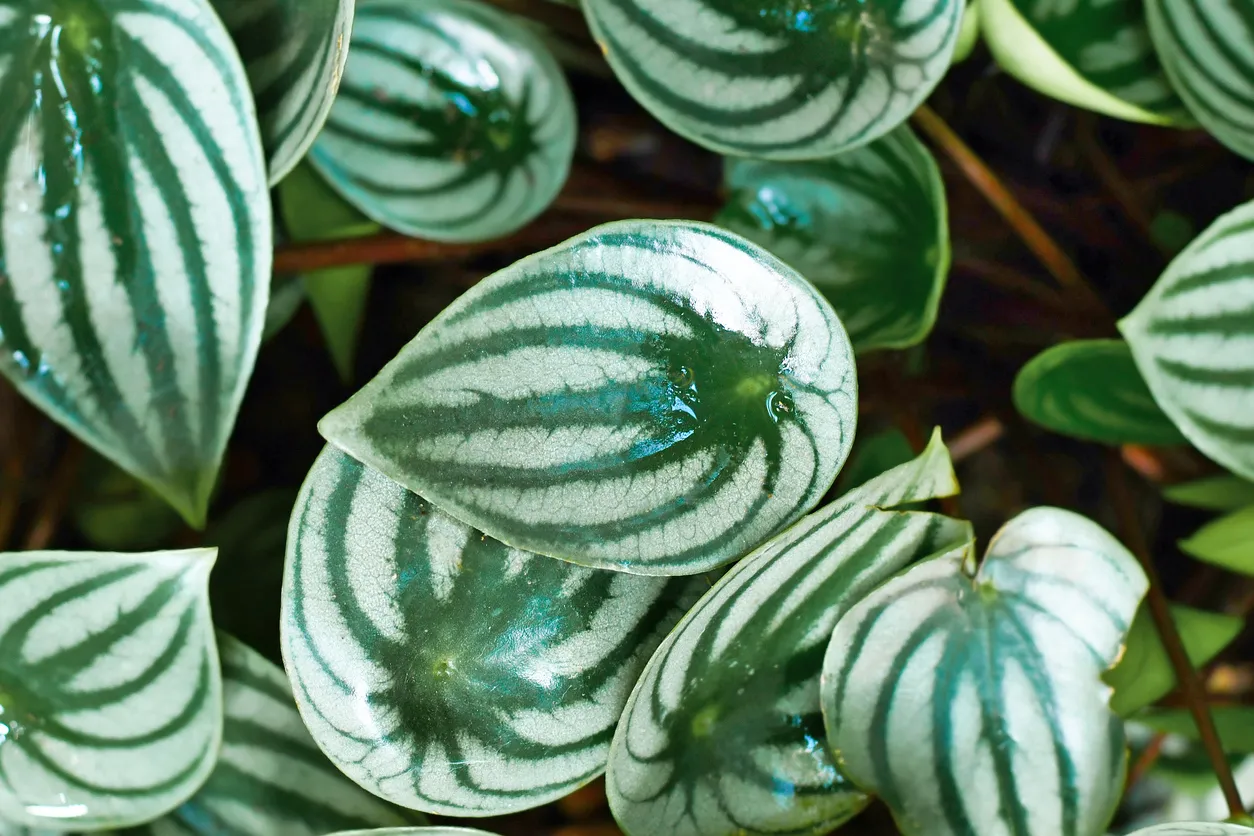
Peperomia is highly decorative, small, and super low maintenance. Don’t worry if you forget to water it one week—it can tolerate dry conditions. A member of the pepper family, peperomia’s leaves come in a variety of vibrant colors, shapes, sizes, and textures, with many presenting a deeply waffled appearance. In low-light conditions, however, variegated varieties will lose some of their color. These succulents like humidity, but let the soil dry out a bit between waterings.
7. Spider Plant (Chlorophytum comosum)
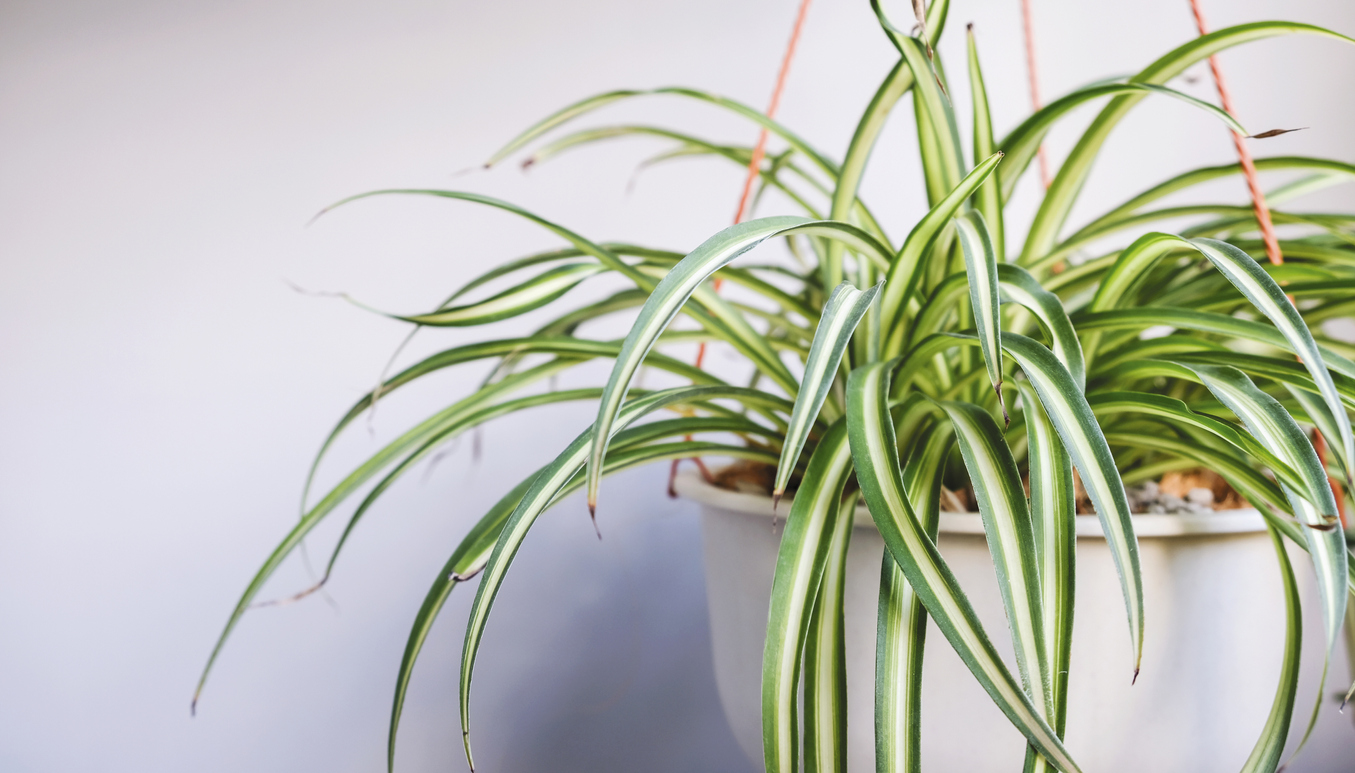
The spider plant has slender, arching blades that create a sunburst display in hanging baskets and on plant stands. It’s as beneficial as it is beautiful, improving indoor air quality by filtering out contaminants such as benzene, formaldehyde, carbon monoxide, and xylene. These rainforest denizens prefer humidity, so give them a weekly misting if the house is especially dry. Note that in extremely low-light conditions, spider plant leaves may yellow, appear washed out, or lose their variegation.
RELATED: 6 Indoor Plants That Don’t Need Drainage
8. Cast Iron Plant (Aspidistra elatior)
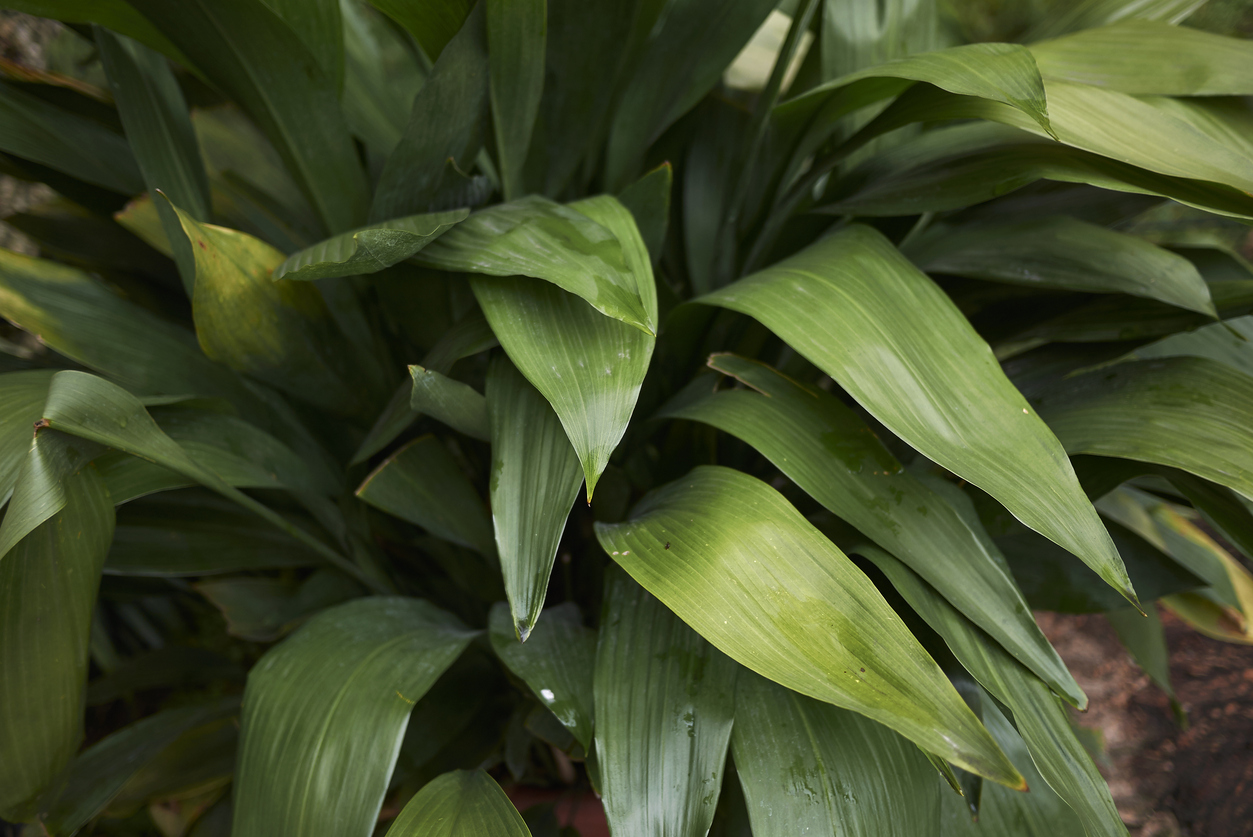
Aptly named, the cast iron plant is ruggedly hardy. It can survive with little light, tolerate irregular watering, and withstand fluctuating temperatures. It’s nearly indestructible, which makes it an excellent choice for beginners. Don’t worry about trimming it back or repotting, either; this slow grower will not overrun your home like an aggressive vining houseplant might. To keep cast iron plants flourishing, make sure the soil is slightly moist but not too wet, and give the broad leaves the occasional dusting.
9. Rubber Plant (Ficus elastica)
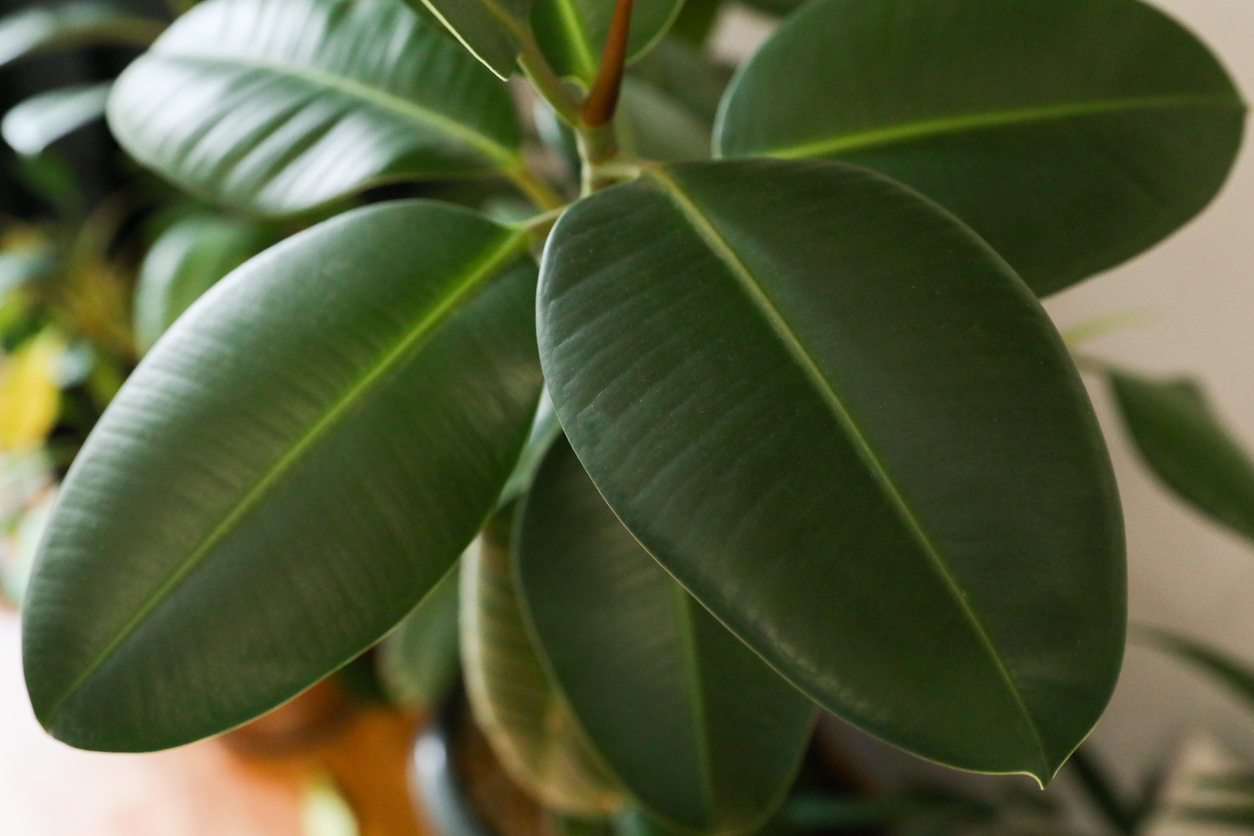
The thick, glossy leaves of the rubber plant put on an outstanding show. While it’s smaller, a potted plant can function as a naturally elegant centerpiece for the table, but over time it can grow to more than 3 feet tall. When it does, move it near an entrance or by the fireplace for a pop of greenery. Protect the plant from drafts and air conditioners, and dust off the broad leaves from time to time to keep it looking its best. Because it’s mildly toxic to pets and humans, choose an out-of-reach spot for a rubber plant.
10. Peace Lily (Spathiphyllum spp.)
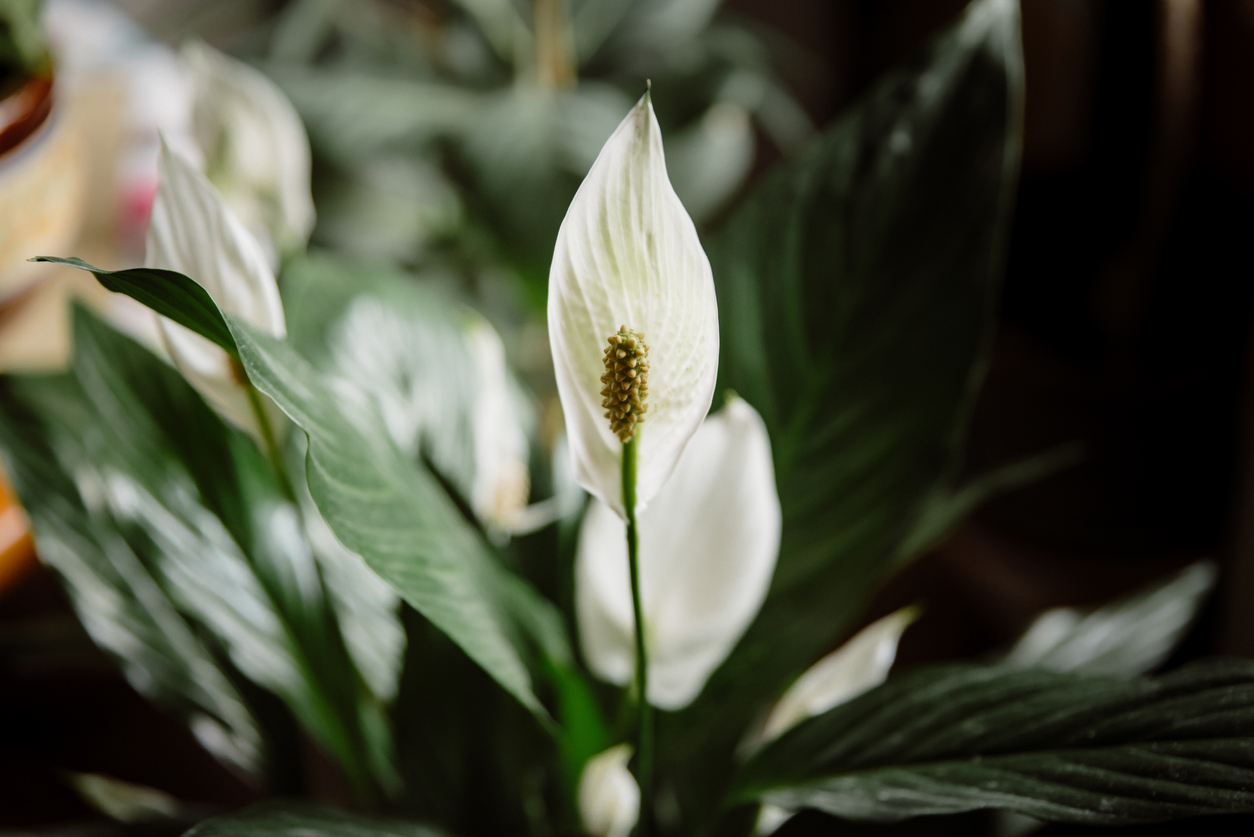
A shade-loving plant that thrives indoors, the peace lily produces elegant white blooms in spring. In fact, it’s one of the few plants that will flower in low-light conditions. Peace lily is an ideal housemate: Not only is it ranked as one of the top 10 best household plants for cleaning the air, it can also succeed with fluorescent fixtures as its main light source. Avoid drafty locations, let the soil dry out a bit between waterings, and never let the plant sit in water. Because it’s toxic to humans and animals, keep peace lily out of reach of children and pets.
RELATED: 14 Houseplants That Grow in Water, So You Can Ditch the Dirt
11. ZZ plant (Zamioculcas zamiifolia)
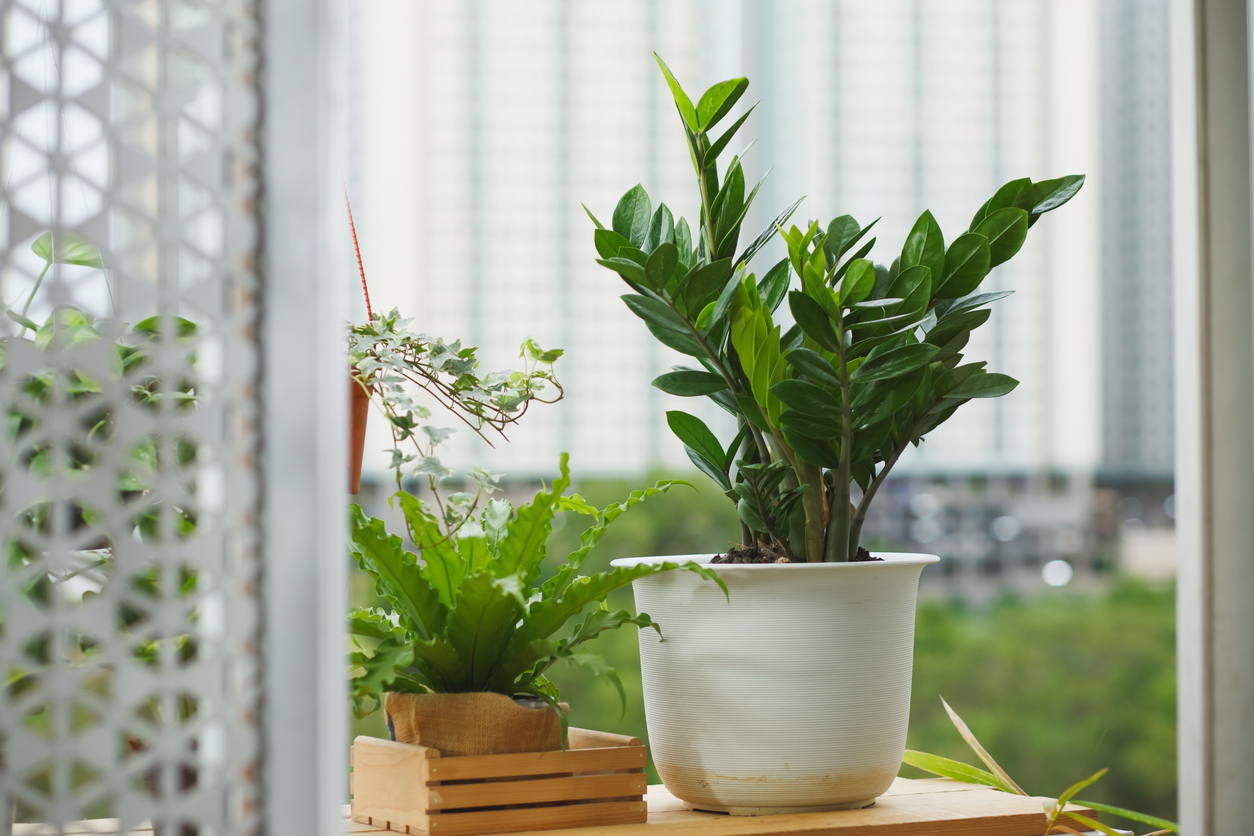
In addition to its fun name, ZZ plant is beloved for its glossy, deep green leaves. Other selling points include this low-light plant’s stiff, upright stems that add height to your display of greenery, and rhizomatous roots that store water, making the plant forgiving of uneven waterings. This one likes light but will also do just fine in low-light areas. It might start leaning toward the light, though, so rotate the plant from time to time to straighten it up. ZZ plant is poisonous, so keep it away from nibbling pets and kids.
12. Dumb Cane (Dieffenbachia seguine)
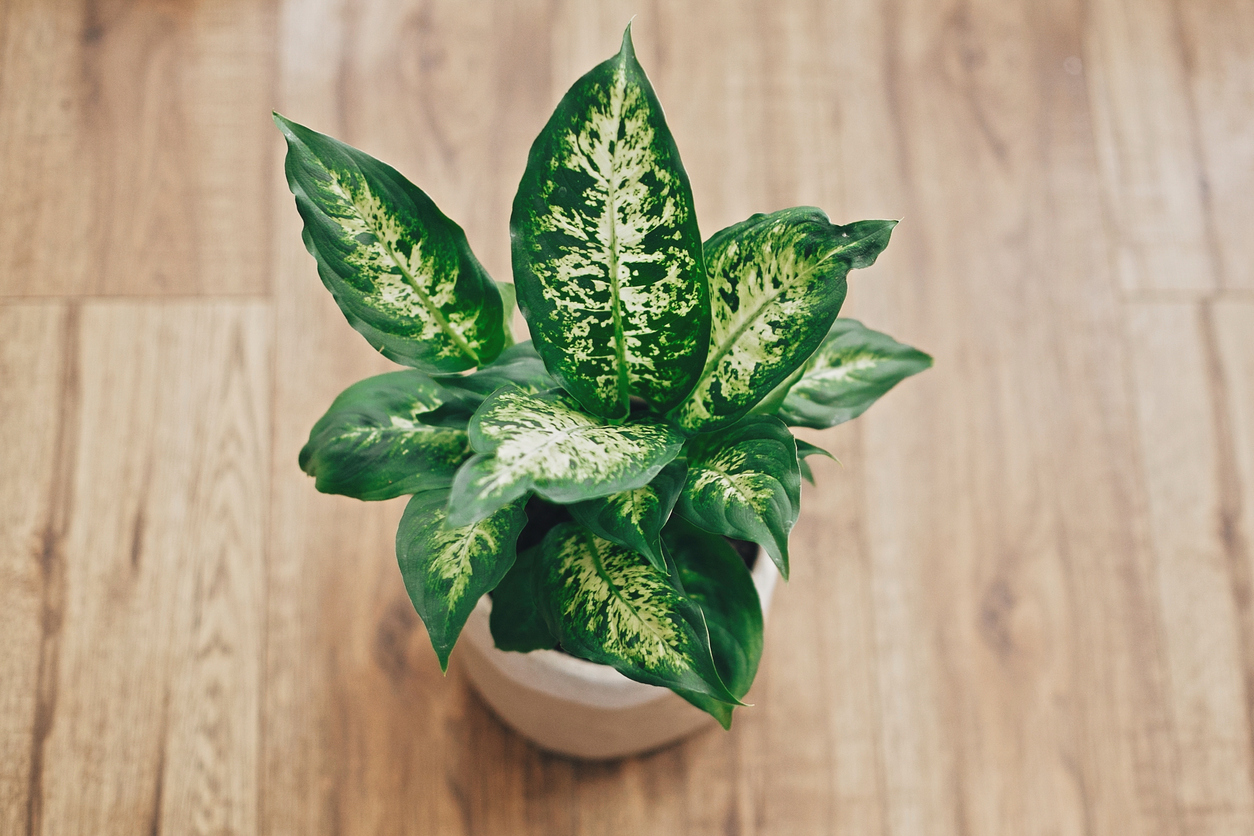
The large, two-toned—green and cream—leaves are the showstopper on dumb cane, also commonly called dieffenbachia. This fast grower can shoot up from a cutting to 2 feet tall in less than a year, although it will top out at 3 to 5 feet when grown indoors. While dumb cane tolerates low light, it does like more light in wintertime, if you can make that work. It is toxic, so keep pets and children in mind if you add this to your collection.
13. Pothos (Epipremnum aureum)
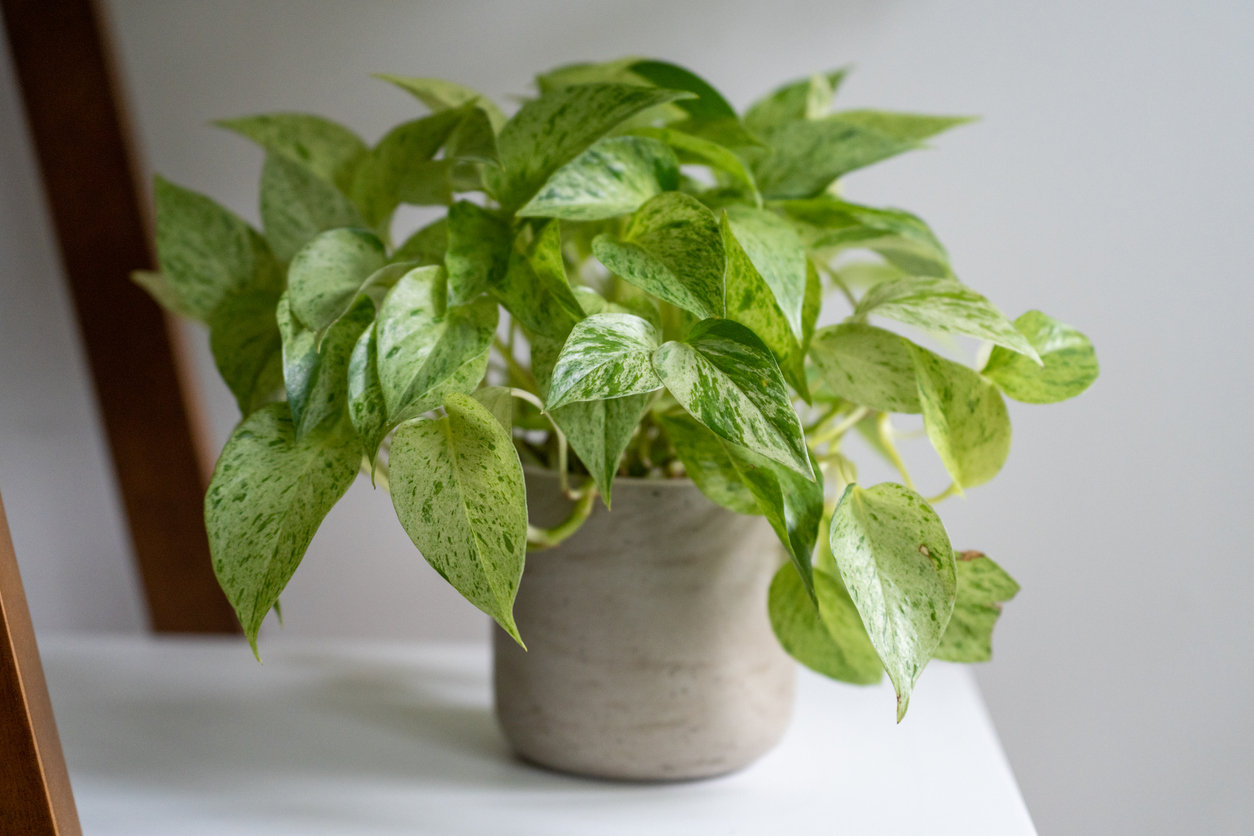
Among the easiest houseplants to grow, pothos is also long-lived. It will forgive you if you forget to water it for weeks, and it’s OK if you place it in a low-light nook. In fact, it’s often touted as one of the best houseplants for low light. Also called devil’s ivy because it’s so hard to kill, pothos have heart-shaped leaves that may be chartreuse, deep green, or variegated. Its vines can grow quite long, but trim it up for a more full appearance. Keep Fido and Mittens away, as this one’s toxic to pets.
RELATED: 10 Pothos Varieties for Your Easy-Care Houseplant Collection
14. Lucky Bamboo (Dracaena sanderiana)
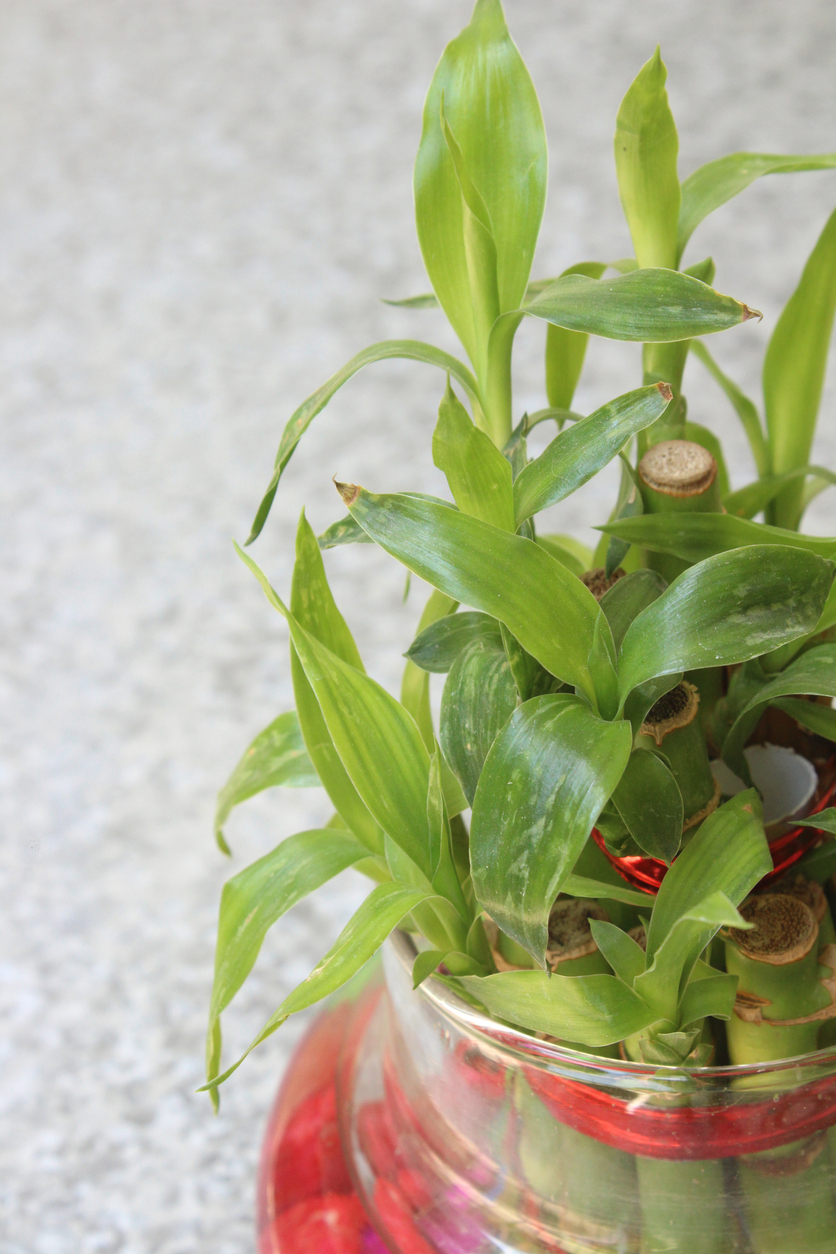
Said to bring good luck to those who care for it, lucky bamboo is an easy-to-grow plant that prefers indirect light. The canes will thrive just plunked in water if you fertilize the water every other month, or you can plant canes in dirt, provided you keep the soil moist. Native to Cameroon, lucky bamboo is not a true bamboo—it’s actually a member of the same plant family as asparagus. Lucky though it may be, it’s toxic to pets, so keep it well away from them.
15. Guzmania Bromeliad (Guzmania spp.)
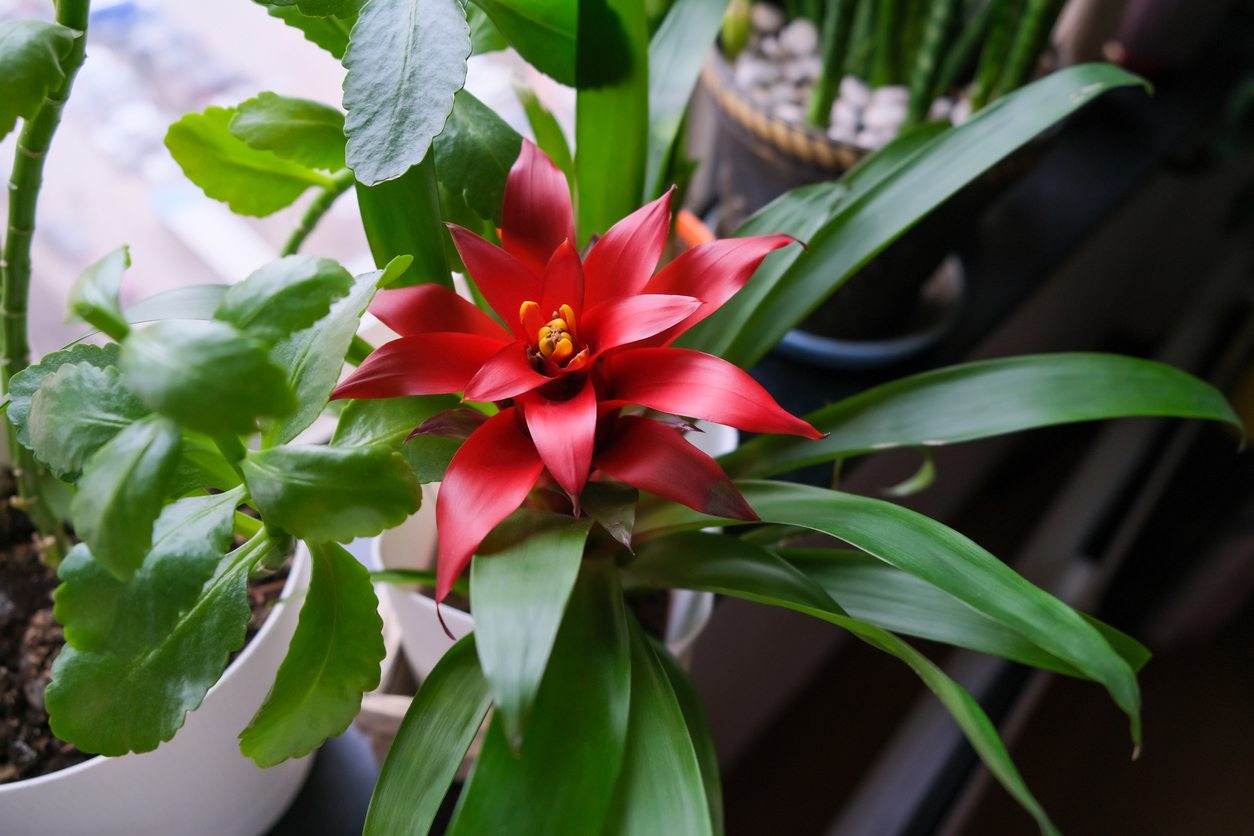
Guzmania is a genus of bromeliad, of which there are many types, but at plant stores you might find plants identified simply as “Guzmania Bromeliad.” Because of nomenclature confusion, be sure to check specific plants for light requirements. Characterized by attractive, colorful bracts (similar to leaves), many bromeliads do fine in low light. Allow the soil to dry out completely between waterings, and then apply water directly to the center “rosette.” Fertilize twice a year with half-strength orchid fertilizer.
16. Ponytail Palm (Beaucarnea recurvata)
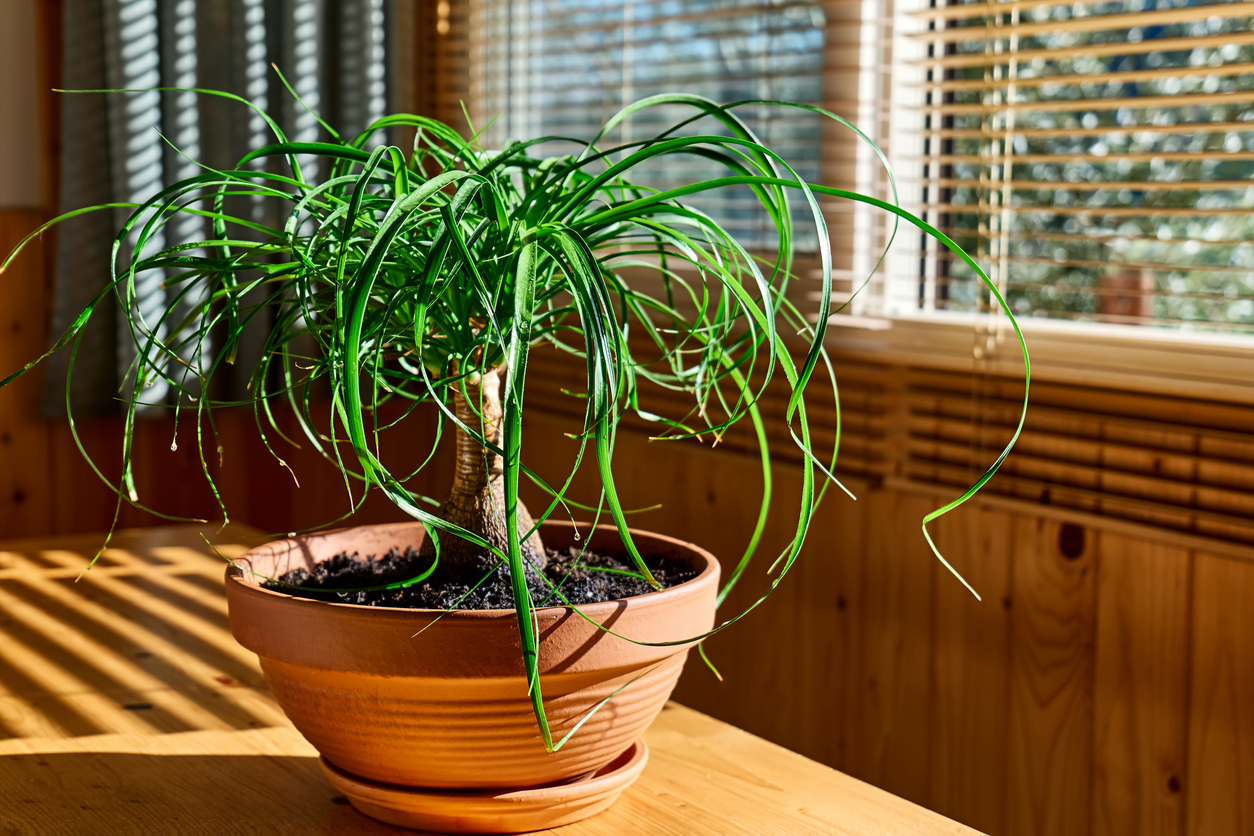
Another plant with a deceptive nickname, ponytail palm is not a palm. It’s a member of the agave family, and it’s a succulent! Its fountain-like leaves and swollen trunk base make it intriguingly attractive. Outdoors, in full sun, ponytail palm will grow to 30 feet tall, but in low-light conditions in a pot indoors, it grows to about 4 feet tall. Allow the top inch or so of soil to dry out before watering. Fertilize with a cacti/succulent fertilizer in the spring.
RELATED: 25 Types of Succulents That Make Great Houseplants
17. Nerve Plant (Fittonia spp.)
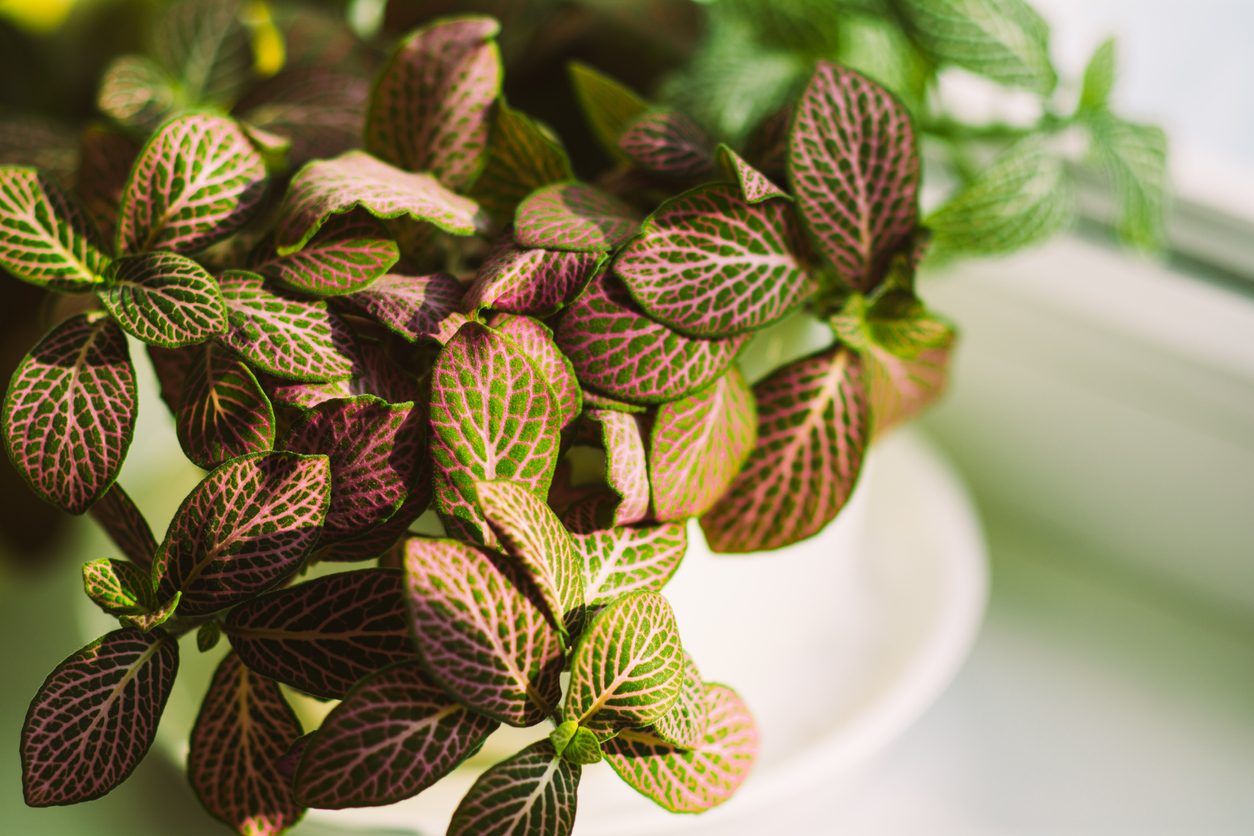
This tropical beauty features deep green leaves that are delicately veined in cream or, in some varieties, in red, pink, or white. A compact plant that grows about 6 inches in height, nerve plant makes a nice counterpoint to taller plants in a collection. This one’s a bit picky and requires lots of humidity, so keep a spray bottle handy. Water nerve plant every 3 to 4 days, and fertilize weekly during the growing season. Use a 5-5-5 liquid fertilizer diluted by half.
18. Parlor Palm (Chamaedorea elegans)
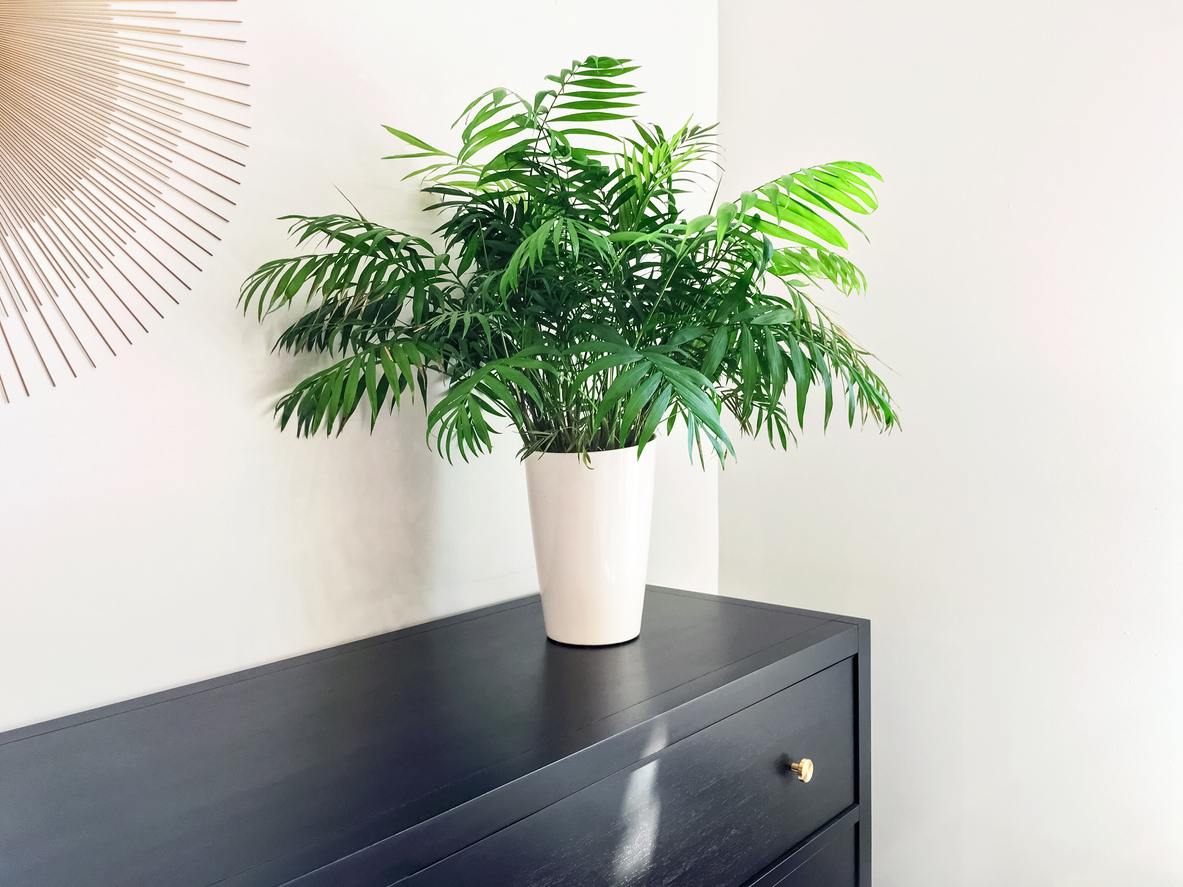
A true palm, parlor palm has long been a popular indoor plant because of its attractive form and tolerance of low-light conditions. It forms a grouping of stems that produce gently draping 6-inch leaves. Slow growers, parlor palms can eventually reach 6 feet when grown indoors. The plant is fairly low maintenance but is susceptible to overwatering, so give it a drink only when the top inch of soil is dry. If you see yellow fronds, it’s definitely time to water. Fertilize with a weak fertilizer once or twice during the growing season.
19. Spineless Yucca (Yucca elephantipes)
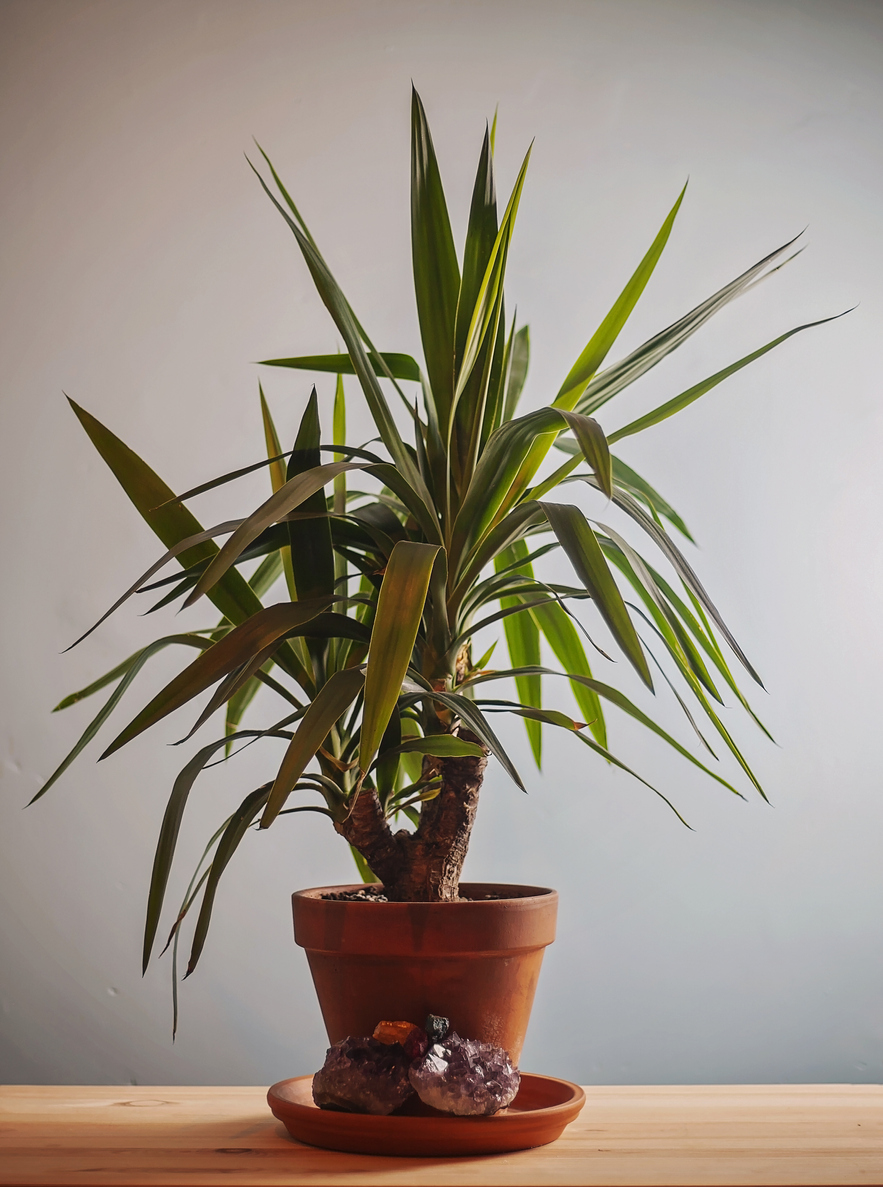
With long, pointed but not sharp leaves that grow in clumps from a thick stalk, spineless yucca has the look of the desert. And true to its desert vibe, this Mexican native doesn’t like to be overwatered. Once a week during spring and summer should suffice, and as little as once every three weeks in fall and winter. While spineless yucca does well in full sun, it will also thrive in lower light conditions indoors. You shouldn’t need to fertilize this plant; it grows in fairly poor soil in its native habitat. It also prefers to be a bit root bound, so you likely won’t need to repot it. All in all, spineless yucca is quite low maintenance. It is, however, toxic to pets, so situate it out of reach.
RELATED: The 7 Best Etsy Stores for Houseplants
20. Corn Plant (Dracaena fragrans)
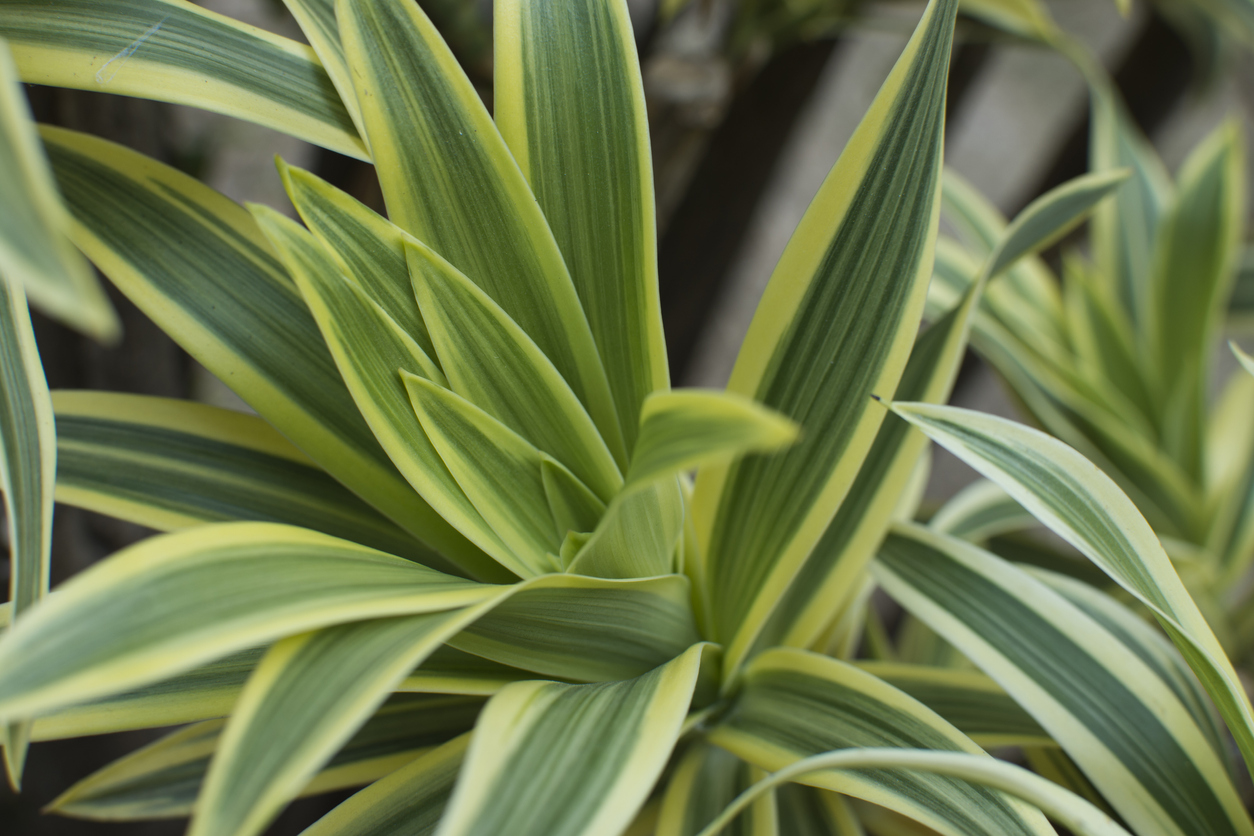
Yet another entry from the genus Dracaena, corn plant has long, narrow solid or variegated leaves that emerge from a thick, sturdy central cane. This tropical African native can reach 6 feet tall indoors and it likes humidity, so keep a spray bottle handy, but don’t overwater it. The soil should be evenly moist but not soggy during the growing season, and you can cut down on watering during winter. Fertilize it every 2 to 3 weeks during the growing season, April to September. Corn plants are toxic to pets, so keep them away.
